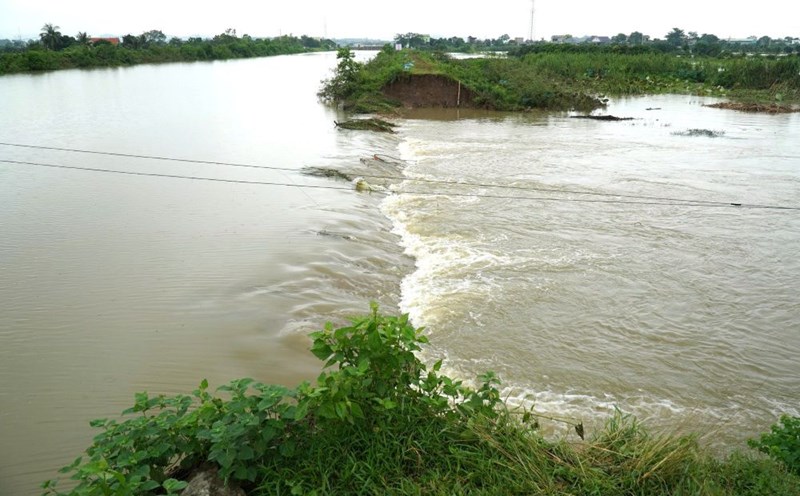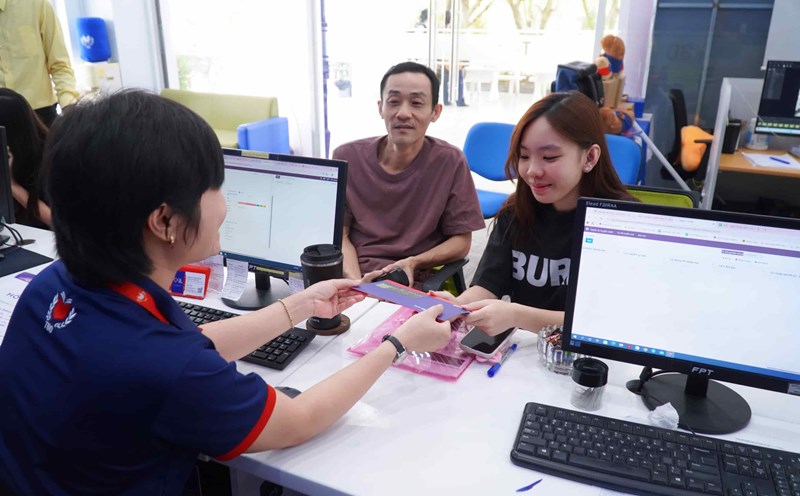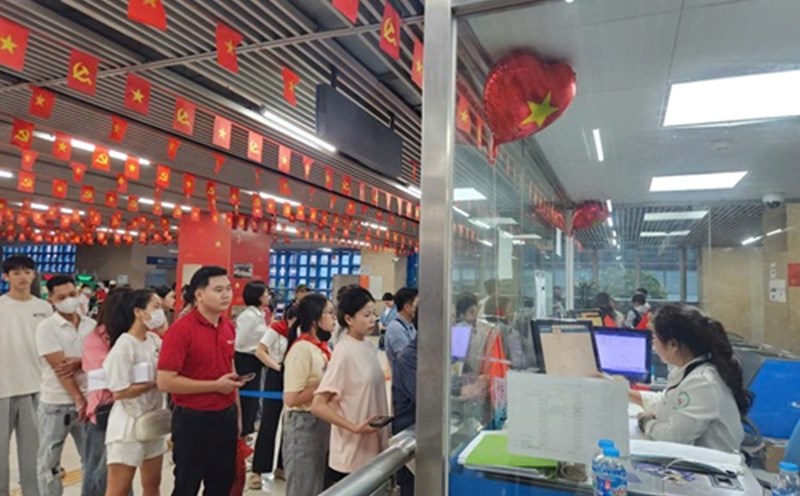Pollution canals gradually transform
In the last days of August, the construction atmosphere is bustling at many construction sites of the Tham Luong - Ben Cat - Nuoc Len canal renovation project, the longest canal in Ho Chi Minh City. In the area near Tham Luong bridge (Dong Hung Thuan ward), the road along the canal has been basically completed, spacious and clean.
From a wild land covered with weeds, this place has now become a community living space.
Ms. Nguyen Thi Hong Ha (residing in Dong Hung Thuan ward) shared: When I moved here in 2019, this area was still full of garbage, foul and deserted. Now the landscape is completely different, there is a road along the canal for people to walk, the air is much cleaner".
The Tham Luong - Ben Cat - Nuoc Len canal renovation project started in February 2023 with an initial investment capital of VND8,200 billion, later adjusted to more than VND9,000 billion. The canal is nearly 32km long, currently at about 60 - 65% progress and is expected to be completed by the end of this year. The project not only beautifies the urban area, reducing pollution but also creates a drainage axis for nearly 15,000 hectares of the basin, while reducing traffic pressure on National Highway 1.
At the same time, Ho Chi Minh City is implementing many other large-scale canal renovation projects. Recently, the city started the project to renovate Xuyen Tam canal (old Binh Thanh and Go Vap districts) nearly 6.7km long, with a total investment of more than VND 17,200 billion. The project has three additional branches over 2.2km long passing through Son, Binh Trieu and Binh Loi bridges. Of the three main packages, package No. 3 with a length of 1.3km has been deployed since May 2025 through the old Go Vap district; the remaining two packages in Binh Thanh will be accelerated after the handover of the site is expected right after the National Day holiday on September 2. The entire project is expected to be completed in 2028.
Mr. Dau An Phuc - Director of the Ho Chi Minh City Urban Infrastructure Construction Investment Project Management Board - said that Xuyen Tam canal has been awaited by people for many years due to serious pollution.
When completed, the project will not only dredge and improve the environment but also form a drainage system, canalside roads, parks, open up public spaces, changing the appearance of the inner city, Mr. Phuc emphasized.
The city also implemented a project to renovate the north bank of the Doi Canal (old District 8) about 4.3km long, passing through Chanh Hung and Phu Dinh wards. The project includes items: Building embankments, dredging canals, upgrading Hoai Thanh and Nguyen Duy streets (20m cutting surface), building a new Nguyen Duy extended road, Hiep An 2 bridge, lighting system, trees and inland waterway wharves.
About 1,605 households were affected, of which nearly 1,300 households have approved compensation. The project is expected to be completed in 2028, contributing to beautifying the landscape "on wharves and under boats", relocating dilapidated houses and developing tourism along the canals.
About 40,000 houses waiting to be relocated
Over the past 30 years, Ho Chi Minh City has relocated about 44,000 houses along canals, reviving many polluted canals such as Nhieu Loc - Thi Nghe, Tan Hoa - Lo gom, Tau Hu - Ben Nghe.
However, the city still has about 40,000 houses on and along canals, of which District 8 (old) alone accounts for more than 15,000. Ho Chi Minh City aims to complete the relocation of about 20,000 units by 2030, equivalent to 50%, to improve urban areas and improve the quality of life.
According to the Ho Chi Minh City Department of Construction, the total capital for relocation, site clearance and infrastructure improvement along canals is expected to be more than 221,000 billion VND, of which 130,680 billion VND is for compensation, support and resettlement; nearly 10,700 billion VND is for building social housing for unqualified households; about 80,000 billion VND is for infrastructure investment, dredging and renovating canals.
The capital will be mobilized from the public investment budget for the period 2026 - 2030, combined with socialization, PPP and auction of public land funds that have not been effectively exploited to create resources.
Ho Chi Minh City affirms that it will ensure a public and transparent compensation and resettlement process. In addition to building a resettlement housing fund, the city also implements support policies after relocation such as exemption, reduction of tuition fees, electricity and water, support for livelihoods, preferential loans for start-ups, vocational training and job referrals.
The Ho Chi Minh City Urban Infrastructure Construction Investment Project Management Board said that the biggest challenge is that most of the households along the canals are poor, encroached and lack legal documents. Therefore, they only receive support for works and architectural objects, and are not compensated for land. This amount of money is not enough for them to buy new houses, making it difficult to mobilize the handover of the site.
In addition, many lost, disputed or unrelated real estate records also slow down the compensation process.
Dr. Tran Quang Thang - Director of the Ho Chi Minh City Institute of Economics and Management, delegate of the City People's Council - said that relocating about 40,000 houses "is a huge financial challenge". According to him, Ho Chi Minh City needs to mobilize many external resources such as issuing construction bonds, attracting foreign investment capital, calling for businesses to participate in PPP in infrastructure and resettlement housing, and taking advantage of land funds after relocation to develop commercial and housing projects.
He emphasized: Most people want to resettle on the spot or near their old place of residence to maintain the community and make a living. Therefore, using public land, especially vacant land, to build resettlement areas both meets the aspirations of the people and improves economic efficiency".
This expert suggested that the city should diversify compensation forms such as cash, resettlement land or resettlement apartments; at the same time, the valuation of recovered assets should be fair and transparent, reflecting the actual value. Providing financial support packages, vocational training and new job orientations to help people quickly stabilize their lives after relocation.










